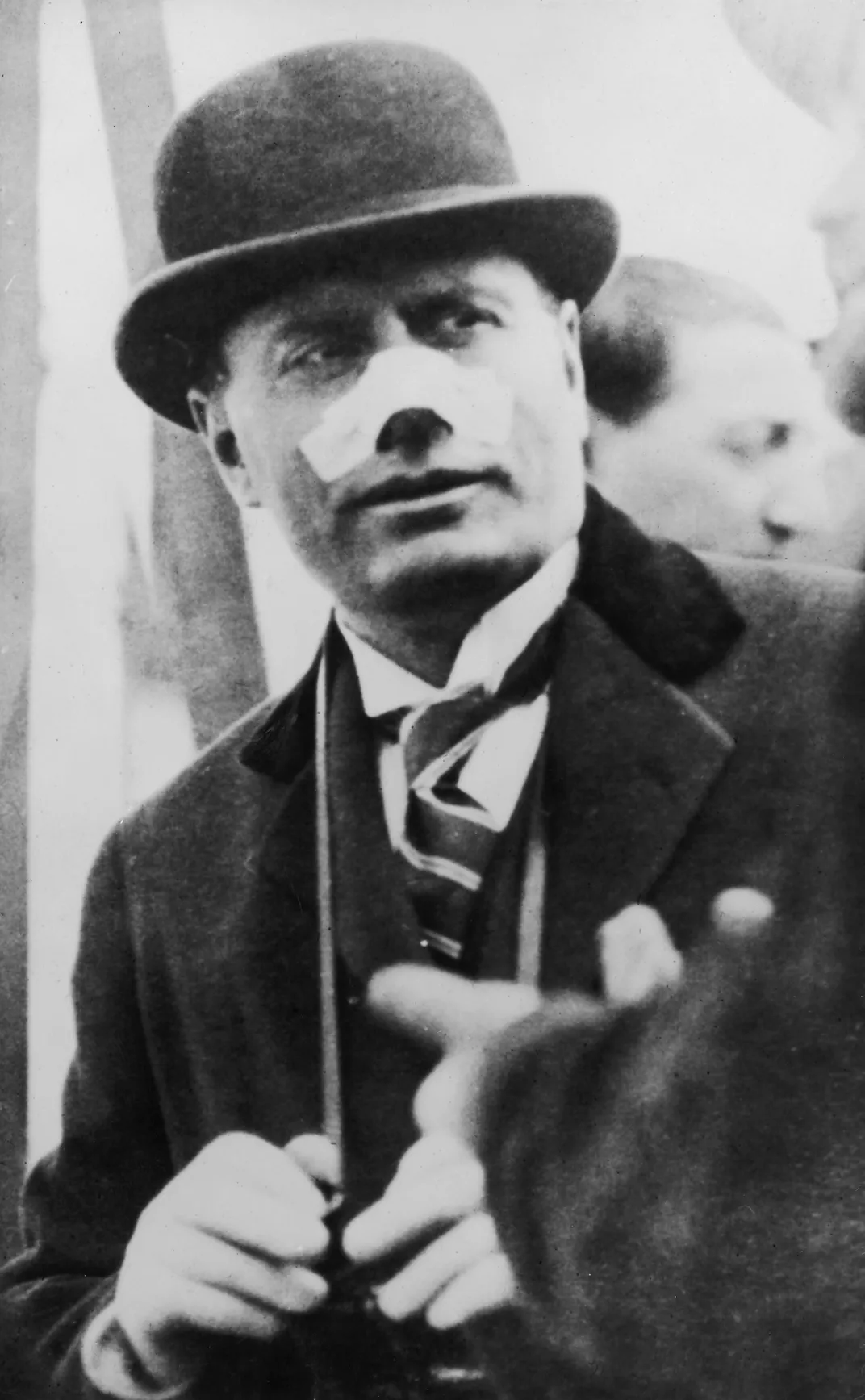The Little-Known Story of Violet Gibson, the Irish Woman Who Shot Mussolini
A free radio documentary tells the tale of the long-overlooked individual who nearly killed the Italian dictator in 1926
:focal(497x218:498x219)/https://tf-cmsv2-smithsonianmag-media.s3.amazonaws.com/filer/58/8b/588b7d2f-afe0-430a-a28f-ab3e904046a1/gibson.jpeg)
In his lifetime, just four people managed to launch successful assassination attempts against Benito Mussolini, the infamous fascist dictator who brought Italy into World War II and inspired Adolf Hitler.
Of those four, just one—Anglo-Irish woman Violet Gibson—ever came close to succeeding. The 50-year-old made headlines on April 7, 1926, when she fired on Mussolini and almost altered the course of history forever. But in the years after her bold attack, Gibson was consigned to an asylum, and her story was all but forgotten.
Nearly a century later, Gibson’s home country of Ireland is hoping to belatedly recognize her legacy, reports Orla Barry for public radio program the World. The Dublin City Council recently passed a motion giving initial approval for the installation of a plaque in Gibson’s honor. As Michael Sheils McNamee writes for BBC News, officials are considering her childhood home in the Merrion Square neighborhood of Dublin as a potential location for the memorial.
Gibson’s story first attracted international attention in 2014, when journalist Siobhán Lynam produced a major radio documentary that brought her remarkable life to a wider audience. Listeners can now access the documentary online for free through Irish broadcaster RTÉ’s website.
Lynam’s radio program drew on The Woman Who Shot Mussolini, a 2010 book by British historian Frances Stonor Saunders. Per BBC News, the journalist’s husband, Barrie Dowdall, is currently screening a documentary based on Gibson’s life at international film festivals.
Born in 1876, Gibson hailed from a wealthy family headed by her father, Lord Ashbourne, a senior judicial figure in Ireland. As a young woman, notes Michael Murphy for the Irish Post, she served as a debutante in the court of Queen Victoria.
Growing up between Dublin and London, Gibson was a sickly child who suffered from physical and mental illness—what was then termed “hysteria,” per the Irish Post. In her mid-20s, she converted to Catholicism; later, she moved to Paris to work for pacifist organizations. According to the World, Gibson’s passionate political and religious beliefs drove her to attempt to murder the Italian dictator in April 1926.
On the day of the shooting, Mussolini had just finished giving a speech to a conference of surgeons in Rome. He was walking through the Piazza del Campidoglio, a square at the top of the Italian city’s Capitoline Hill, when Gibson—a small, “disheveled-looking” woman—raised a gun and fired at him at point-blank range, Lynam tells the World.
Two chance events prevented Gibson from succeeding: First, Mussolini happened to turn his head to look at a group of nearby students who were singing a song in his honor. This caused the bullet to graze the bridge of his nose rather than hit him square in the face. Second, though Gibson fired another bullet, it lodged in her pistol. By that point, she had already been dragged to the ground by a mob.
Police escorted her away before the furious onlookers could exact their revenge. Hours after the attempt on his life, Mussolini reemerged in public, a bandage on his nose but otherwise no worse for the wear.
Despite this cool façade, Stonor Saunders tells the World that Mussolini was embarrassed to have been injured by a woman.
“He was very misogynistic, as was the entire fascist regime,” she says. “He was shocked to be shot by a woman. And he was shocked to be shot by a foreigner. It was a kind of injury to his great ego.”

Gibson was deported to England, where doctors declared her insane. Her family agreed to place her in a mental asylum in Northampton. While imprisoned, Gibson wrote letters pleading for her release. Addressed to the likes of Winston Churchill and Princess (now Queen) Elizabeth, the letters were never actually sent.
Gibson was locked away until her death at age 79 in 1956. No family members attended her funeral, according to the World, but BBC News notes that Gibson’s remaining relatives have expressed their support for a plaque in her honor.
“It is now time to bring Violet Gibson into the public eyes and give her a rightful place in the history of Irish women and in the history of the Irish nation and its people,” said Dublin councilor Mannix Flynn in the motion seeking the plaque’s installation.
As Stonor Saunders explains to the World, misogyny and stigma surrounding mental illness played a role in silencing Gibson’s story for decades. The Irish woman’s contemporaries labeled her as insane instead of acknowledging her intellectual qualms about Mussolini’s dictatorship.
“It suited both the British authorities and her family to have her seen as ‘insane’ rather than as political,” said Flynn in the motion.
When authorities and her family decided to lock Gibson away for the rest of her life, they “excluded the possibility that you could be mad or have what is conventionally described as moments of madness, but that you can also have completely legitimate political ideas,” Stonor Saunders tells the World. “And she did.”
/https://tf-cmsv2-smithsonianmag-media.s3.amazonaws.com/accounts/headshot/nora.png)


/https://tf-cmsv2-smithsonianmag-media.s3.amazonaws.com/accounts/headshot/nora.png)